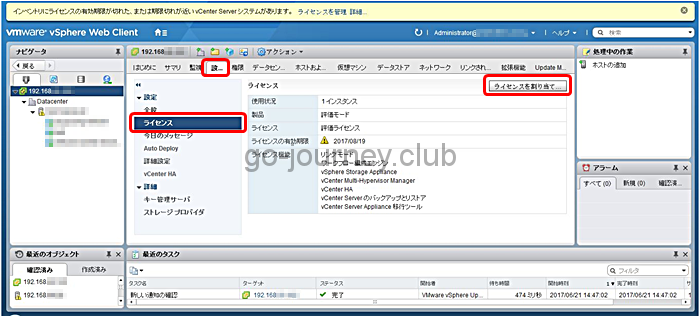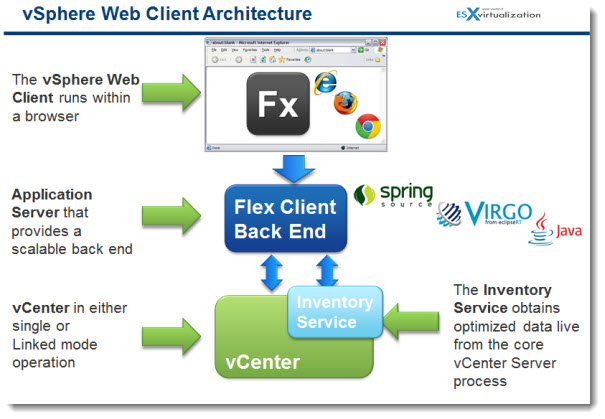

- Vmware vsphere web client 6.5 how to#
- Vmware vsphere web client 6.5 install#
- Vmware vsphere web client 6.5 update#
- Vmware vsphere web client 6.5 full#
- Vmware vsphere web client 6.5 password#
Type the existing vCenter 6.0 Single Sign-On password, I am keeping all the defaults and if you are using service account type the Password for it., This is all old information I entered in earlier article while vCenter 6.0 Installation. The vCenter Single Sing-On credentials must be of a user with vCenter Single Sign-on administrative privileges to your existing vCenter single sign-on domain. Next is end user license agreement, Click on I accept the terms of the license agreement, click next.

In my scenario I had installed embeded Platform Services Controller PSC with vCenter, Both the components will get upgraded, Press next. And launched setup installer from DVD drive, It will automatically detect existing vCenter version installed and will be guide upgrade.
Vmware vsphere web client 6.5 update#
VSPHERE UPDATE MANAGER 6.5 UPGRADE AND VSPHERE WEB CLIENT PLUG-IN INTEGRATIONĮSXI 6.5 UPGRADE INSTALLATION AND UI HTML WEB CLIENTīefore starting upgrade I strongly recommend backup vCenter SQL server data, if possible have snapshot for vCenter server. I will be using my same Windows vCenter 6.0 virtual machine vm to upgrade to latest 6.5 version, To start with I have already registered and downloaded required ISO files from, I have attached ISO to VM CD/DVD drive. Whenever you update vSphere suite, vCenter Server should be upgraded first then update manager, third upgrade Esxi server. Installation steps are almost as same as earlier version.
Vmware vsphere web client 6.5 install#
There are tones of new features included in new version of vSphere 6.5 suite, Here I will be testing one of the inbuilt new feature vSphere HTML5 web client first, Although for earlier version this was separate ova appliance provided and had to install it manually (), In this chapter I will be just upgrading my existing vSphere 6.0 environment. You may also be interested in An HTML5 based vSphere Web Client, finally! which looks at the origins of the HTML5 vSphere client and how it may be installed as a Fling which gives you access to the latest updated version.Recently VMWare has announced vSphere 6.5 product suite GA (General availability). The Functionality Updates for the vSphere Client post will give you an idea of what’s currently supported. With 90% of the features now available, it will soon fully replace the Adobe Flex-based client for a better performing and safer management experience. Work on the vSphere Client (HTML5) is advancing at a rapid pace. On the cluster side of things, you can now set DRS/HA overrides, configure predictive DRS, create datastore clusters as well as configure SDRS rules and VM overrides.
Vmware vsphere web client 6.5 full#
Though not a UI improvement per se, you can now select the full range of metrics when using advanced performance charts.Ĭontent libraries have also be revamped in that now you can: There are also a ton of UI improvements that include quick filters, a live refresh, sorting and filtering by column, and a VM list for vAPPs. Using the datastore browser to register a VM via its VMX file To create a new vDS, switch to Networking view, click on a datacenter and select New Distributed Switch from the Distributed Switch menu.

This is no longer the case with vSphere 6.5 U1. With older releases of the vSphere client (HTML5), creating a new distributed switch (vDS), adding hosts to it, and managing advanced features was out of the question.
Vmware vsphere web client 6.5 how to#
With vSphere 6.5 Update 1, the HTML5 vSphere client enjoys a major boost making it suitable for daily use.įor today’s post, I picked 8 new features added to this latest vSphere client showing you exactly how to use them. The main problem, at the time, was the lack of functionality this new client provided when compared to its Adobe based sibling. This latest client started life as a VMware Fling which eventually found its way in vSphere 6.5 as a second web-based vSphere client. A major vSphere update is something people are generally eager to test even if it means losing sleep deciding on whether to upgrade a 30-host cluster or not! Update 1 for vSphere 6.5 was recently released and with it a number of new vSphere client features, which is the subject of today’s post.Īs you may know, the vSphere Web client will soon be permanently replaced by a better performing HTML5 based vSphere client.


 0 kommentar(er)
0 kommentar(er)
